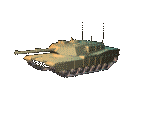Portugal takes twin-track approach to frigate upgrades; [1]
2015-03-03
Scott, Richard
The Portuguese Navy is planning to modernise both of its frigate classes
Vasco Da Gama class to receive limited modernisation but Bartolomeu Dias class undertaking major refit for future NATO operations
The Portuguese Navy has detailed plans for the modernisation of its five-ship frigate force, acknowledging that resource constraints will necessitate the re-purposing of its three Vasco Da Gama-class MEKO 200PN ships for lower intensity tasks only.
Speaking at the IQPC Surface Warships 2015 conference in Genoa, Italy, on 28 January, Vice Admiral António Manuel Fernandes da Silva Ribeiro, the Portuguese Navy's Chief of Materiel, said that the mid-life modernisation programmes for the two classes were being conditioned by three factors. "First, we have limited financial resources. Second, we must address material obsolescence and increase performance as much as can. And third, from the operational side, we must decide what are imperatives, and what are desirables."
"Based on these considerations, we are going to modernise our frigates in different ways," he continued. "While we will keep the two Bartolomeu Dias-class M-frigates for more demanding operations, the three Vasco Da Gama-class ships will be deployed only on [lower intensity] small scale operations and so will receive a limited modernisation."
It is planned that both classes will be subject to major refits to extend platform life and address obsolescence (for example, in platform management systems). Overhauls will also be undertaken of main propulsion machinery. However, the levels of investment in weapons and sensors will vary.
Built in Germany to the Blohm + Voss MEKO200PN design, the three Vasco Da Gama-class ships - NRP Vasco Da Gama , NRP Álvares Cabral , and NRP Corte Real were all commissioned into service in 1991. Their equipment fit includes a single 100 mm gun, an Mk 29 octuple launcher for RIM-7P NATO SeaSparrow missiles, eight Harpoon anti-ship missiles, Mk 46 Mod 5 lightweight torpedoes, and a Phalanx Block 1B close-in weapon system.
According to Vice Adm António Silva Ribeiro, the scope of modernisation work for the Vasco Da Gama-class ships encompasses the overhaul and upgrade of the existing MW08 and DA08 radars, new electronic warfare (EW) systems, introduction of IFF Mode 5, new electro-optical surveillance capability, and new military GPS. Hardware in the STACOS Mod I combat management system will be replaced to resolve obsolescence. Other changes include a SATCOM upgrade, new UHF communications, the addition of Link 22 (alongside Link 11/16), introduction of the ICCS6 integrated communications control system, and an upgraded C4I network.
As regards self-defence, the Phalanx close-in weapon system will be brought up to the latest Block 1B Baseline 2 standard. The existing NATO SeaSparrow point defence missile system will remain; the RIM-7P missiles themselves will be re-motored.
The Portuguese Navy's two former Royal Netherlands Navy (RNLN) M-frigates, NRP Bartolomeu Dias (ex-HrMs Van Nes) and NRP Dom Francisco de Almeida (ex-HrMs Van Galen), are to receive a more substantive upgrade in order to enable them to participate in higher intensity national or NATO operations. These will, in part, leverage from upgrades already in train for the RNLN's two remaining M-frigates.
"As regards these ships," Vice Adm António Silva Ribeiro said, "we will also acquire new ESM, IFF Mode 5, military GPS, and electro-optical systems. We are going to upgrade the sonar, modernise the point defence missile system with the introduction of the Evolved SeaSparrow Missile, and overhaul and upgrade the Goalkeeper close-in weapon system.
"In addition, we plan to acquire a completely new [electronic warfare] system, and upgrade our lightweight torpedoes to Mk 54 standard."
Another planned change is the replacement of the current command system with the Guardion combat management system developed by the Netherlands' CAMS-Force Vision software centre. "We are part of an M-frigate user group with the Netherlands, Belgium, and Chile, and we are working well in this to modernise all the ships in the class," Vice Adm António Silva Ribeiro said. "Guardion is very much a part of that."
This article, first published on 4 February 2015, is subject to a correction and has been amended.
ANALYSIS
The twin-track modernisation path being pursued by the Portuguese Navy for its two frigate classes represents a pragmatic approach to continuing resource constraints. The very limited planned investment in the modernisation of the Vasco Da Gama-class combat system, together with the evolution of the high-end above water threat, will denude the warfighting performance of these ships over time. The corollary is that the three ships will be restricted to small-scale contingency operations, and deployments in the West African theatre (where the Portuguese Navy judges the threat to be more limited).
Credit: Richard Scott London
http://www.militaryaerospace.com/news/2 ... -br-1.html







